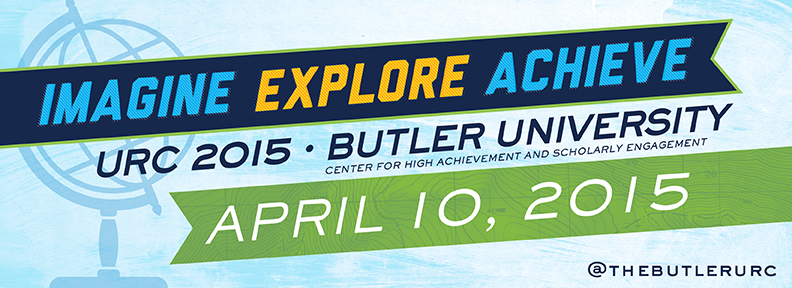
Pharmacy, Health Sciences & Exercise Science
Event Title
An Assessment of New Cardiovascular Disease Risk Guidelines and Appropriate Therapy in a Worksite Health Promotions Program
Document Type
Oral Presentation
Location
Indianapolis, IN
Subject Area
Pharmacy, Health Sciences & Exercise Science
Start Date
10-4-2015 8:30 AM
End Date
10-4-2015 10:00 AM
Sponsor
Carrie Maffeo, Isabel Hagedorn (Butler University)
Description
An Assessment of New Cardiovascular Disease Risk Guidelines and Appropriate Therapy in a Worksite Health Promotions Program
Stephanie Geiger PharmD Candidate; Carrie Maffeo PharmD, CDE, BCPS; Isabel Hagedorn PharmD
Background: Atherosclerotic cardiovascular disease (ASCVD), or commonly referred to as heart disease and stroke, is the number one cause of death in the United States. ASCVD is defined as acute coronary syndromes, history of myocardial infarction (MI), stable or unstable angina, coronary or other arterial revascularization, stroke, transient ischemic attack (TIA), or peripheral arterial disease presumed to be of atherosclerotic origin. The number of patients with this disease is expected to increase in the future and also the associated costs with it. The primary objective of this study was to utilize the new ASCVD guidelines and calculator to establish a 10-year CVD risk of patients and to determine appropriate therapy.
Methods: This was a retrospective chart review of patients from Butler University's worksite health promotions program, Healthy Horizons, aged 20-77 years, from January 2009-December 2013 identifying patient's risk assessment for ASVCD. Using both the previous Framingham and the new 10-year ASCVD Risk Calculator, a 10-year and/or 30-year/lifetime risk assessment percentage was identified and based on the patients' risk factors and calculated risk assessment percentages, appropriate therapy was determined for the patients.
Results: A total of 466 patients were included in this review; 282 were females and 14 were males. The mean age was 43 years. From the patients' most recent visit, the mean Framingham risk was 1.101% and the mean 10 year ASCVD risk was 4.109%. Based upon the Framingham risk and most recent visit, 454 patients (97.4%) treatment would not be recommended and 12 patients (2.6%) treatment would be recommended. In comparison, the new guidelines indicated 412 (88.4%) would not benefit from statin therapy and 54 (11.6%) would benefit from statin therapy.
Conclusion: The new ASCVD risk assessment does indicate that more people would benefit from statin therapy than the previous Framingham risk assessment. With more patients being recommended treatment with the new guidelines, these findings show how the new guidelines have an impact on the cost of treatment for ASCVD.
An Assessment of New Cardiovascular Disease Risk Guidelines and Appropriate Therapy in a Worksite Health Promotions Program
Indianapolis, IN
An Assessment of New Cardiovascular Disease Risk Guidelines and Appropriate Therapy in a Worksite Health Promotions Program
Stephanie Geiger PharmD Candidate; Carrie Maffeo PharmD, CDE, BCPS; Isabel Hagedorn PharmD
Background: Atherosclerotic cardiovascular disease (ASCVD), or commonly referred to as heart disease and stroke, is the number one cause of death in the United States. ASCVD is defined as acute coronary syndromes, history of myocardial infarction (MI), stable or unstable angina, coronary or other arterial revascularization, stroke, transient ischemic attack (TIA), or peripheral arterial disease presumed to be of atherosclerotic origin. The number of patients with this disease is expected to increase in the future and also the associated costs with it. The primary objective of this study was to utilize the new ASCVD guidelines and calculator to establish a 10-year CVD risk of patients and to determine appropriate therapy.
Methods: This was a retrospective chart review of patients from Butler University's worksite health promotions program, Healthy Horizons, aged 20-77 years, from January 2009-December 2013 identifying patient's risk assessment for ASVCD. Using both the previous Framingham and the new 10-year ASCVD Risk Calculator, a 10-year and/or 30-year/lifetime risk assessment percentage was identified and based on the patients' risk factors and calculated risk assessment percentages, appropriate therapy was determined for the patients.
Results: A total of 466 patients were included in this review; 282 were females and 14 were males. The mean age was 43 years. From the patients' most recent visit, the mean Framingham risk was 1.101% and the mean 10 year ASCVD risk was 4.109%. Based upon the Framingham risk and most recent visit, 454 patients (97.4%) treatment would not be recommended and 12 patients (2.6%) treatment would be recommended. In comparison, the new guidelines indicated 412 (88.4%) would not benefit from statin therapy and 54 (11.6%) would benefit from statin therapy.
Conclusion: The new ASCVD risk assessment does indicate that more people would benefit from statin therapy than the previous Framingham risk assessment. With more patients being recommended treatment with the new guidelines, these findings show how the new guidelines have an impact on the cost of treatment for ASCVD.
